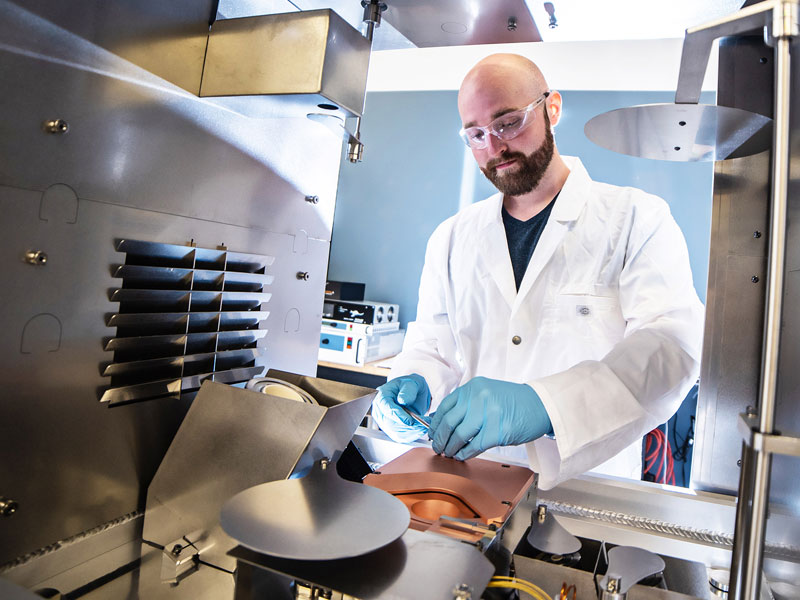The Wolfson Foundation has given £1 million towards the establishment of a new national thin-film cluster facility for advanced functional materials. The facility, which will be hosted and managed by Oxford Physics, will place the UK at the forefront of this cutting-edge field.
Functional materials such as silicon have revolutionised the modern world, and advanced functional materials hold similar promise. They are already having an impact in the fields of solar energy conversion, lighting, displays and wearable devices, and there is potential for their use to transform society in numerous and diverse ways.

In order to pursue and strengthen ground-breaking research into these innovative materials and devices, researchers need access to state-of-the-art, interconnected vacuum deposition equipment. This kind of equipment – which is currently in short supply in the UK – enables new, multilayer structures of advanced functional materials to be fabricated with unprecedented control and variety, as well as allowing the combination of multiple material classes into one device. Thanks to the generosity of the Wolfson Foundation, the University will now be able to meet this need.
Once established, the new facility will become a key resource for more than 50 Oxford researchers working at the forefront of novel materials, nanotechnology and device development. As a national facility, with equipment co-funded by the Engineering and Physical Sciences Research Council, it will also be available for use by researchers and industrial scientists outside Oxford, helping the UK take a leading role in advancing scientific endeavours in this field.
'We are very excited to have this multi-user facility here in Oxford and are looking forward to the synergies it can bring to the various research communities from across the UK,' says Moritz Riede, Associate Professor in Soft Functional Nanomaterials. 'We really appreciate the support of the Wolfson Foundation in making this happen.'
Research conducted at the facility will tackle real industrial, societal and environmental challenges. Next-generation materials and new capabilities in product design could lead to a step-change in application areas such as solar energy and display technologies. Through more energy-efficient end-use technology and cost-effective energy generation, research at the facility will contribute to the improvement of living standards in a sustainable growing economy.
'Performing leading research on novel materials and optoelectronic devices requires the ability to reproducibly fabricate high quality thin films and multilayer device structures,' says Henry Snaith, Professor of Physics. 'This unique cluster facility will enable us to transition to a new level of control over thin film deposition, and deliver complex device structures previously unrealisable. It will truly expand the boundaries for our science and innovation.'
Lin Richardson, Deputy Chief Executive and Head of Grants at the Wolfson Foundation says: 'With a need for further cutting-edge equipment of this type in the country, the Wolfson Foundation is delighted to be able to support this facility and its pioneering work, and to bring researchers in this field together. We look forward to seeing the new materials and devices created for future generations.'
The facility will be based in Oxford's Robert Hooke Building, and is expected to open in early 2020.